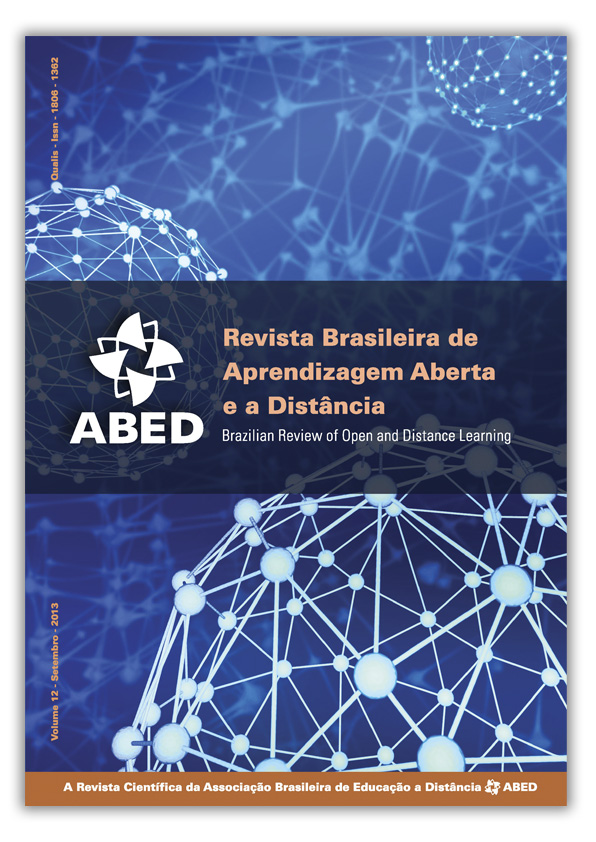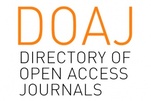O Futuro da Educação a Distância: Que fatores afetarão como a educação a distância se desenvolverá no futuro?
DOI:
https://doi.org/10.17143/rbaad.v12i0.251Palavras-chave:
educação a distância, retenção, desistência.Resumo
Este artigo procura abordar algumas das várias características que podem afetar o desenvolvimento futuro da educação a distância. Ele sugere que o elemento de maior importância é a questão da retenção e desistência do aluno. A educação a distância aparenta ter índices de conclusão equivalentes a um quarto, ou menos, do que a educação convencional – o “défi cit da educação a distância”. Isso traz consequências negativas para três das mais importantes características da educação a distância: custo, sustentabilidade e acesso. O artigo investiga como vários departamentos da educação a distância afetam a desistência e procura argumentar que, em última análise, as principais barreiras que afetam a retenção de alunos é o comportamento dos membros da comunidade de educação a distânciaDownloads
Referências
ANDERSON, E. Retention for Rookies - presentation at the National Conference on Student Retention, San Diego, 2006.
BYNNER, J. Hefce Report 01/46 - Th e wider benefi ts of higher education. 2001. http://www. hefce.ac.uk/pubs/hefce/2001/01_46.htm. Accessed 11/11/2011.
HUETT, J. Kalinowski, K. Moller, L. and Huett, K. Improving the Motivation and Retention of Online Students Th rough the Use of ARCS-Based E-Mails. American Journal of Distance Education, 22: pp159–176, 2008.
MOORE, M. Recent contributions to the theory of distance education. Open Learning, Volume 5, Issue 3, 1990.
O’HARA, K. et. SELLEN, A. A Comparison of Reading Paper and On-Line Documents. CHI97 Electronic Publications. 1997. Disponível em http://www.sigchi.org/chi97/proceedings/paper/koh.htm
POWELL, R. Openness and dropout: a study of four open distance education Universities. 2009. Retrieved from http://www.ou.nl/Docs/Campagnes/ICDE2009/Papers/Final_paper_262powell.pdf
RAMSDEN, P. Learning to Teach in Higher Education, 2nd ed., London: Routledge, 2003.
ROY, R., POTTER, S., & YARROW, K. Designing low carbon higher education systems:Environmental impacts of campus and distance learning systems. International Journal of Sustainability in Higher Education, 9(2), 116–130, 2007.
RUMBLE, G. Th e competitive vulnerability of distance teaching universities, Open Learning, 7 (2), pp 31–45, 1992.
RUMBLE, G. E-education – whose benefits, whose costs? In: Papers and debates on the economics and costs of distance and online learning. No. 7 of the series ‘Studien und Berichte der Arbeitsstelle Fernstudium Forschung der Carl von Ossietzky Universitat, Oldenburg’ Germany, 2004.
SIMPSON, O. Predicting Student Success. Open Learning. Volume 21, Issue 2, pp125, 138, 2006.
SIMPSON, O. Motivating Learners in Open and Distance Learning: do we need a new Th eory of Learner Support? Open Learning. Volume 23, Issue 3, 2008.
SIMPSON, O. Supporting Students in Online and Distance Education. Routledge, New York, 2013.
TWYFORD, K. Student retention in distance education using on-line communication. University of Technology Sydney Australia, 2007. Disponível em http://books.google.co.uk/books/about/Student_retention_in_distance_education. html?id=k9gaNAAACAAJ&redir_esc=y
Downloads
Publicado
Como Citar
Edição
Seção
Licença
Todos os artigos publicados na Revista Brasileira de Aprendizagem Aberta e a Distância (RBAAD) recebem a licença Creative Commons - Atribuição 4.0 Internacional (CC BY 4.0).
Todas as publicações subsequentes, completas ou parciais, deverão ser feitas com o reconhecimento, nas citações, da RBAAD como a editora original do artigo.




 .
.








